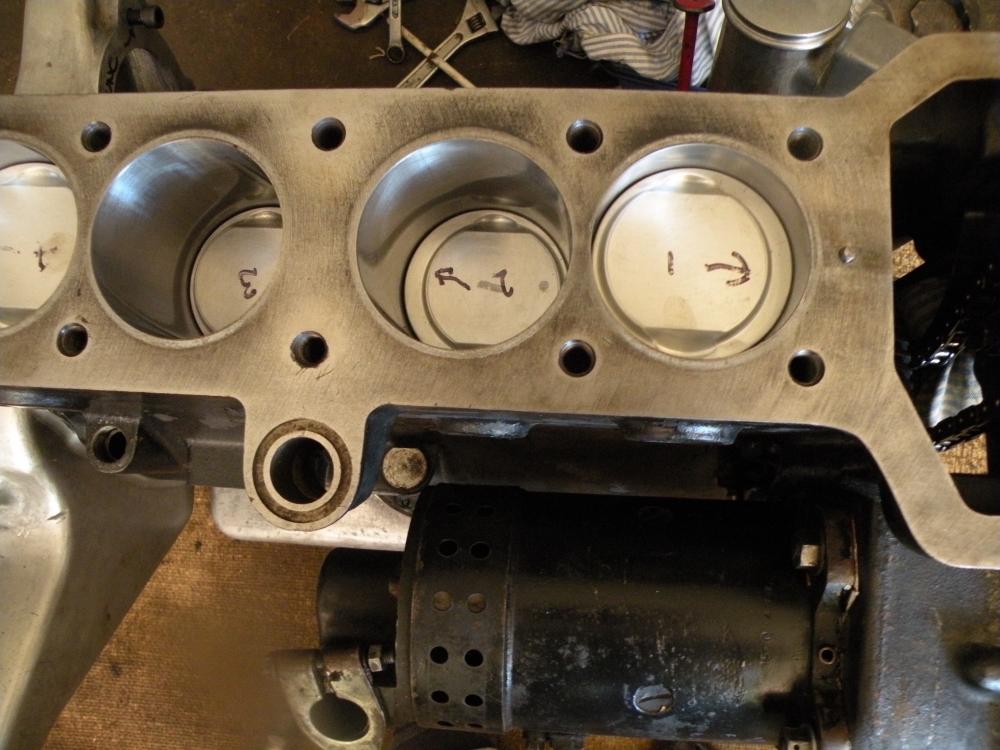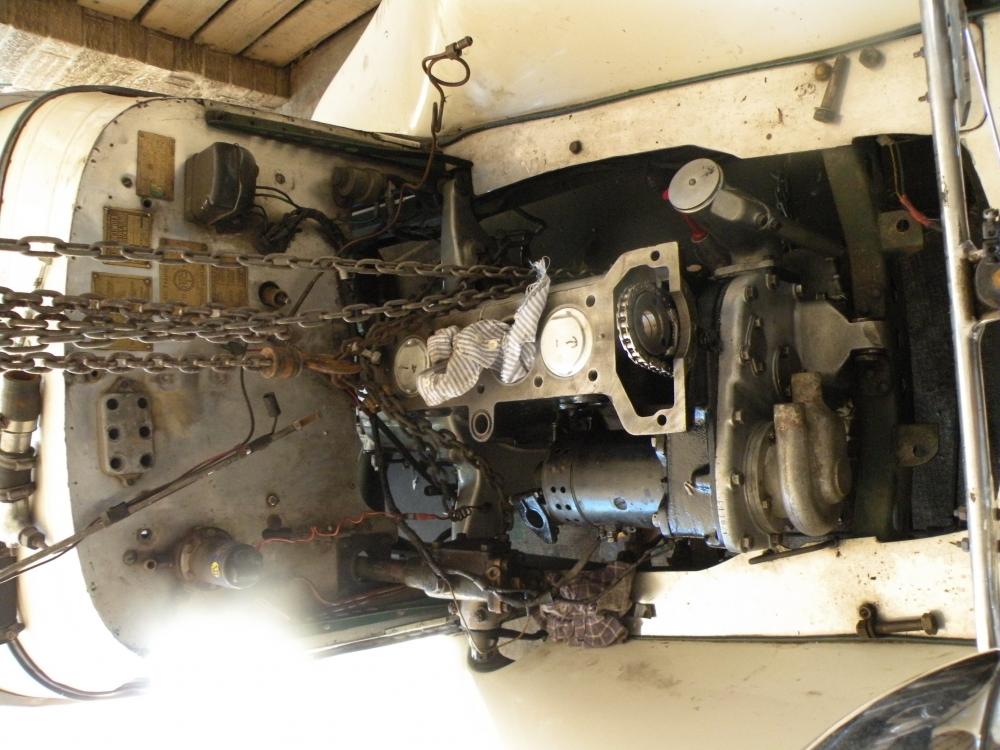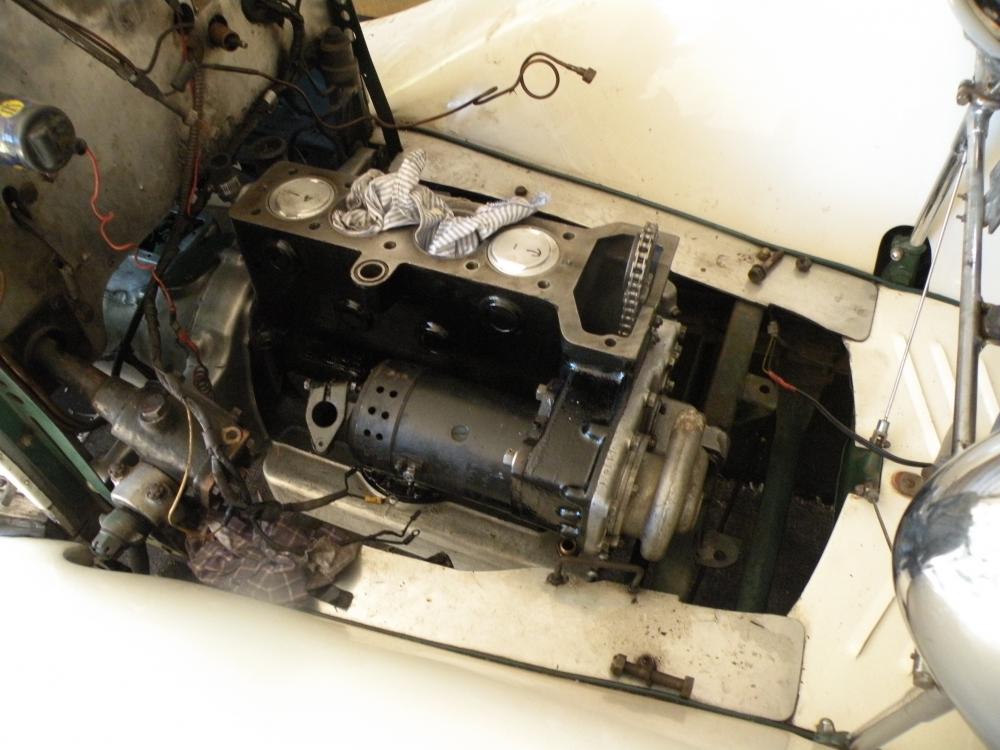You must be logged in to rate content!
4 minute(s) of a 484 minute read
3-5-2017
If you have not already worked it out my Rapier engine is rather special. I have shown the attached photograph to a number of people and to date not one can even guess what is going on. No prizes but what is your explanation?
3-7-2017
Don't look now but something is happening!
Hello Again John
You are being busy.
There are two water transfer elbows on the rear of the head, so you cannot see them just yet. One leads directly from the water pump via a gallery mounted along the side of the block the other is an external transfer from the rear of the block into the rear of the head.
The cylinder head it original apart from larger inlet valves and enlarged and polished inlet ports.
The car has basically had sixty years of development. It has been fitted with three different bodies, the first a two door fixed head coupe. Then a very basic two seater sports racing car then the sporting two seater body I fitted when I first bought the car in 1978 that it still has. I changed to the new 1500cc block after a major blow up all but destroyed the original 1100cc block.
The bore started out as 62.5mm (1104cc) then grew to 66mm.(1232cc) The new block is 73mm,(1498cc) Stroke remains the same 90mm. Carburettors are 2 X SU 1.5 inch.
3-8-2017
Hello All
It really is very simple, Members of the Rapier Register arranged for new pattens to be made and had new blocks cast. Previously the maximum you could safely bore out an original Rapier block was to 66mm which suited idealy a Matchless motorcycle piston. This gave noninally 1232cc and 9.00:1compression. In the past I have done two or three Rapier engines to this capacity. The last one I did must have been a "lightweight" block because we "fell in the water" and had to have the bores sleeved and the sleeves sealed in using a total submersion in a vacuum chamber process. Some of you are correct when you say that the bores in the "1500" block are off-set the centre of the two end ones moving out towards the front and the back respectively while two centre bores are moved towards the centre. Because the original "hemi" cylinder head is retained the combustion chamber is slightly off set this requires the domes on the pistons to also be off set.
More later......
The raised section of the piston, not really a dome , actually enters the bottom 5mm approx of the combustion chamber. which is why it must be off set. It all works very well and makes the car so much better to drive. You should remember that this is not a new development but we have been driving the Rapier as a 1500 for 10 to 15 years. I will have to go back through a whole lot of records to see exactly when the 1500 block was put into use. Initially I was still using cams with a huge amount of over lap and much higher comp. The car went very well but just was not nice to drive on the road. Once it was decided that I could not drive in competition in the future, it all became too hard and that is when I decided to "de-tune" the engine. It really is a great touring car and is so much more pleasant to drive. It has much more torque down low and pulls very strongly from about 2,000 rpm on.......... It will keep up comfortably with modern traffic on our (Australian) interstate highways. It will cruise at 60 to 65 MPH, hour after hour and it loves mountain roads.



Great detail!
Posted by Diggymart on 6/20/19 @ 2:41:04 PM